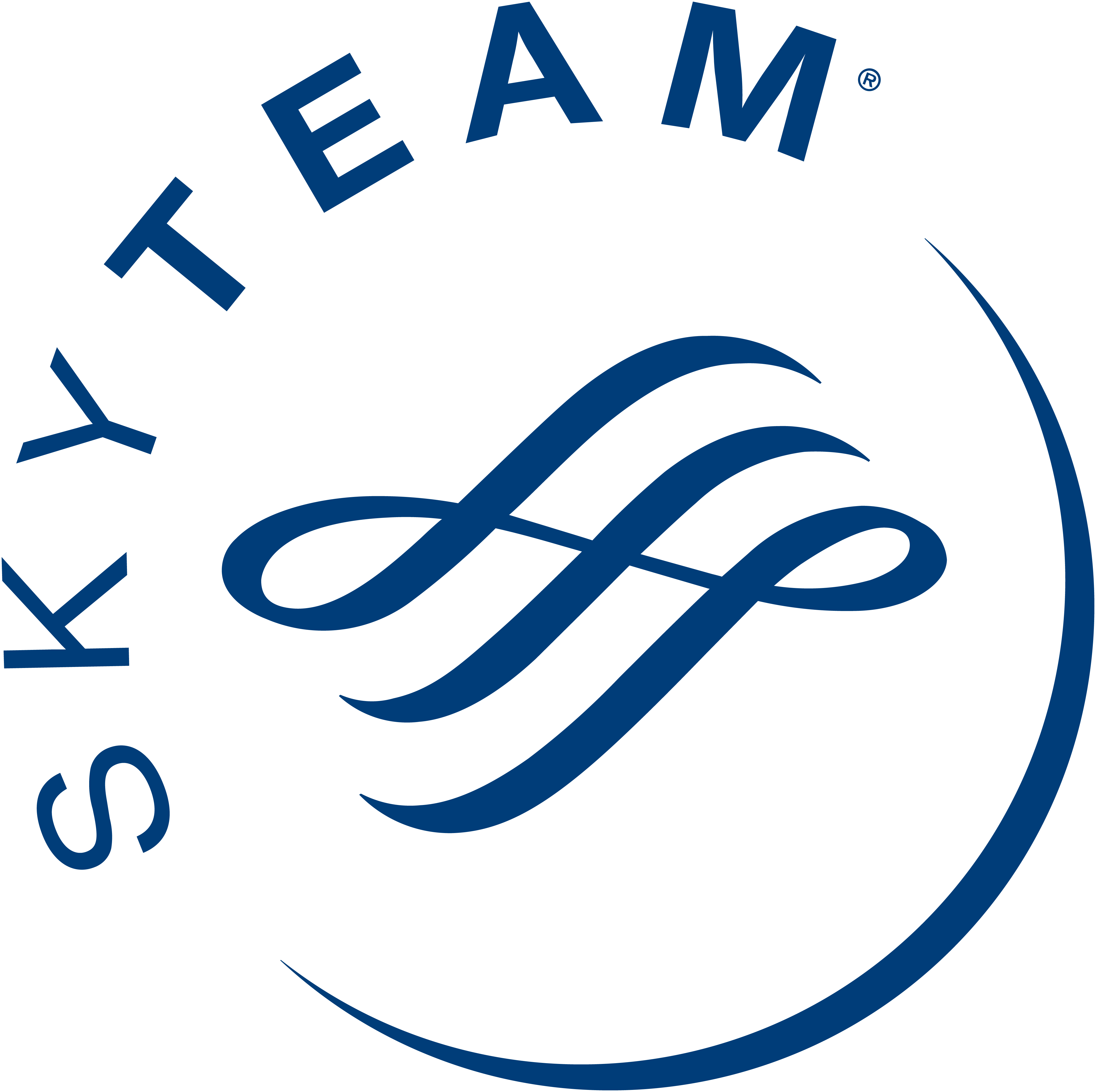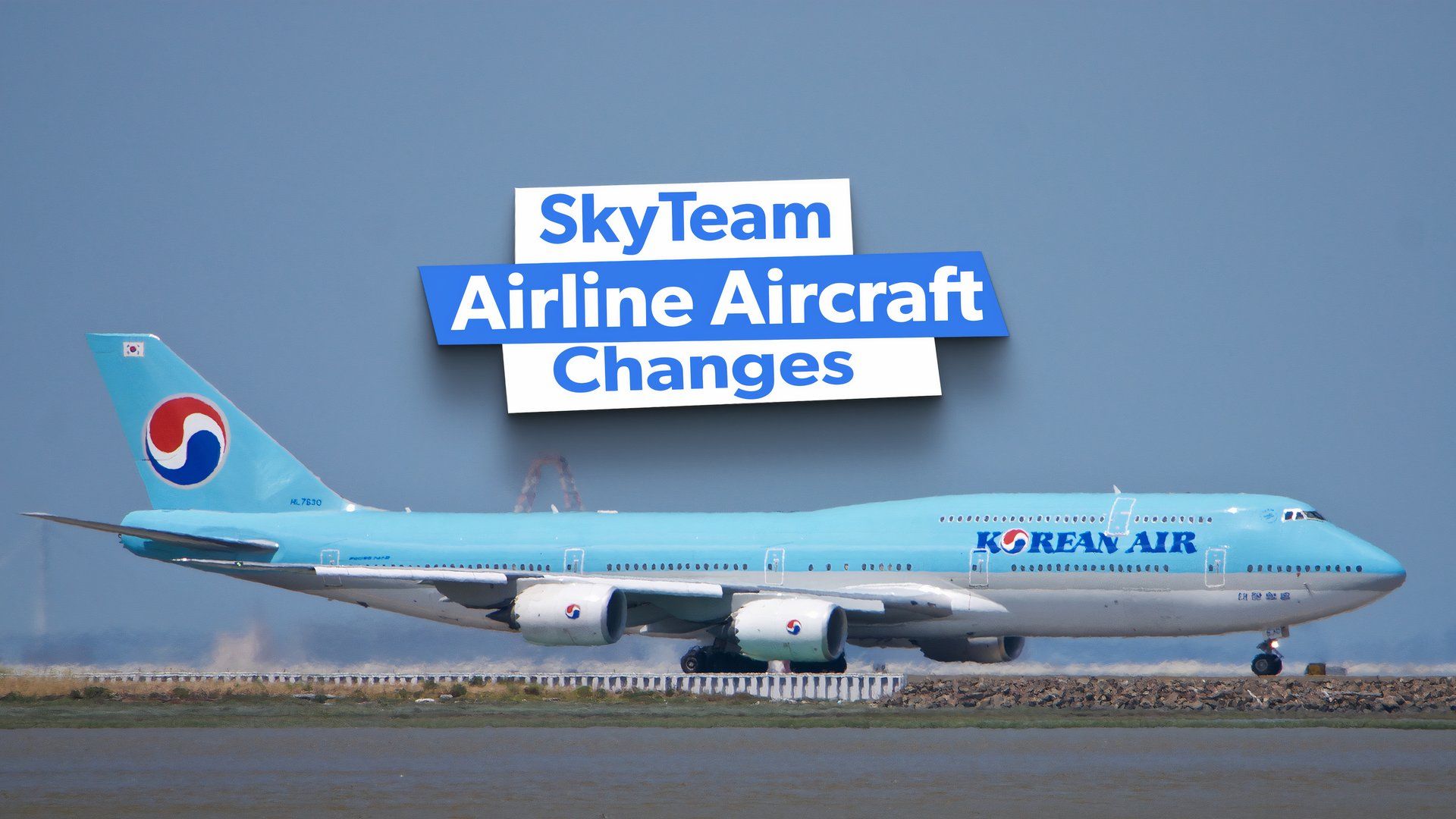The world of modern-day commercial aviation is an industry where, more than most, companies need to be adaptable in response to operational circumstances. While this holds relevance when it comes to short-term crises in the here and now, such as the ground stop issued to all American Airlines flights on Christmas Eve, airlines also look further into the future when it comes to adapting their schedules.
One way in which this can be done is through the addition or removal of routes to or from a given carrier’s schedules. However, within this space, adaptations can also be made on a more minute level in the form of aircraft changes on existing routes in response to operational factors such as seasonal peaks and troughs in demand. December 2024 has been a busy month for this at airlines in  SkyTeam
SkyTeam
.
1
Kenya Airways, Nairobi – Dubai
787 out, A330 in
Kenyan flag carrier Kenya Airways has been part of the SkyTeam alliance since September 2007, and is notable for being the group’s only African member airline. The Nairobi-headquartered carrier has its main hub at Jomo Kenyatta International Airport (NBO), from which it operates a wide range of routes on both short and long-haul corridors. One of these serves Dubai International Airport (DXB) in the UAE.
Photo: Vincenzo Pace | Simple Flying
Kenya Airways faces stiff competition from UAE flag carrier Emirates on the route between Nairobi and Dubai, and, therefore, it is unsurprising that, according to AeroRoutes, the airline deploys its flagship ![]() Boeing
Boeing
787-8 ‘Dreamliner’ widebodies on the corridor. Current fleet data from aeroLOPA shows that these twinjets have 30 business class flatbeds and 204 standard economy class seats onboard.
At present, these aircraft operate a daily round trip between Nairobi and Dubai. However, a recent schedule change highlighted by AeroRoutes shows that, in the first quarter of 2025, the Kenyan flag carrier will be swapping the Dreamliner for an Airbus
A330-300 from Hi Fly. This will apply between January 16th and March 29th, with the A330 operating flight KQ310 to Dubai and KQ311 back to Nairobi.
Photo: Karolis Kavolelis | Shutterstock
Hi Fly’s website shows that its A330s have a wide variety of seating configurations onboard, making them well-suited to short-term leases at a range of airlines. However, data from Cirium, an aviation analytics company, shows that Kenya Airways’ Dubai flights operated with the type will have 249 seats onboard. The only A330-300 at Hi Fly with this amount is 9H-HFA, whose cabins are split as follows:
- 46 business class flatbeds in a four-abreast 1-2-1 configuration.
- 203 economy class seats in an eight-abreast 2-4-2 configuration.
2
Kenya Airways, Nairobi – London
787 out, A330 in
Recent reports by AeroRoutes show that Kenya Airways is making a similar operational swap on the route from its hub at Jomo Kenyatta International in Nairobi to London Heathrow (LHR) in the UK. This is a route on which Kenya Airways faces direct non-stop competition from UK flag carrier and oneworld British Airways. The Kenyan national airline will also serve London Gatwick (LGW) in 2025.
Kenya Airways serves its route from Nairobi to London Heathrow on a daily basis, again using the Boeing 787-8 Dreamliner as its aircraft of choice. However, starting on December 1st, 2024 and continuing to January 15th of next year, the carrier has been swapping the US-built twinjet out for Hi Fly’s aforementioned 249-seat Airbus A330-300 on almost all of the flights on this corridor between Europe and Africa.
Specifically, the A330-300 is operating flight KQ100 from Nairobi to London Heathrow and KQ101 back to the Kenyan capital city every day of the week except for Tuesday, when the 787 remains the aircraft of choice. While the timings are the same for KQ101 regardless of the aircraft, KQ100 departs earlier when being flown by the A330, taking to the skies at 08:35 as opposed to the usual 09:10.
3
China Airlines, Kaohsiung – Bangkok
737 out, A321neo in
Over in Asia, Taiwanese flag carrier China Airlines has now been a full member airline of the SkyTeam alliance for more than 13 years since getting in on the act on September 28th, 2011. While the airline has its main hub at Taoyuan International Airport (TPE), it also has focus cities located elsewhere, with one of these being Kaohsiung International Airport (KHH), situated in the southwest of Taiwan.
Photo: Phung Quang Minh | Shutterstock
From here, the carrier serves a variety of short-haul destinations within Asia, and one of these is, according to AeroRoutes, set to be the subject of an aircraft change in the first quarter of 2025. Specifically, February 4th to March 29th next year will see the Taiwanese carrier swap the Boeing 737-800 for the Airbus A321neo on its daily flights from Kaohsiung to Bangkok Suvarnabhumi (BKK) in Thailand.
These flights are numbered as CI839 and CI840, with the former leaving Kaohsiung at 14:45 and touching down in Bangkok at 17:35. After a turnaround that sees it spend just an hour on the ground, the return flight departs Bangkok at 18:35, and is scheduled to arrive back into Kaohsiung at 22:55 local time. The outbound block time is three hours and 50 minutes, compared to three hours and 20 coming back.
Photo: Phung Quang Minh | Shutterstock
The use of the Airbus A321neo instead of the Boeing 737-800 will allow China Airlines to significantly increase its capacity on the route between Kaohsiung and Bangkok. Indeed, the carrier’s 737-800s have just eight business class seats and either 150 or 153 in economy class, compared to 12 business class seats and 168 in economy class on the A321neo. The Airbus jets are also somewhat younger.
4
China Airlines, Taipei – Denpasar
A330 out, 777 in
China Airlines also has changes afoot in the new year when it comes to widebody operations on its intra-Asia routes. Specifically, it has eyed the corridor between its hub at Taipei Taoyuan International Airport and Denpasar International Airport (DPS) in Bali, Indonesia for an operational alteration, with AeroRoutes noting that this will see the Airbus A330-300 swapped for the Boeing 777-300ER next summer.
Numbered as flight CI771, this daily service leaves Taipei at 09:10, and is scheduled to touch down in Denpasar five hours and 30 minutes later at 14:40 local time. These flights also have a one-hour turnaround, with the return leg (CI772) scheduled to depart at 15:40. The duration of the return flight is marginally shorter, at five hours and 25 minutes, giving it a scheduled arrival time of 21:05.
Photo: Vincenzo Pace | Simple Flying
The Airbus A330-300s typically deployed by China Airlines on this intra-Asian corridor have 277 economy class seats onboard, and either 30 or 36 business class flatbeds. Contrastingly, the configuration used on the Boeing 777-300ERs that will replace them between July 1st and August 31st in 2024 is a three-class affair. Collectively seating a grand total of 358 passengers onboard, this layout consists of:
- 40 business class flatbeds in a four-abreast 1-2-1 configuration.
- 62 premium economy recliners in an eight-abreast 2-4-2 configuration.
- 256 economy class seats in a 10-abreast 3-4-3 configuration.
5
Delta Air Lines, Atlanta – São Paulo
A330 out, A350 in
Over in the US, Atlanta-based American legacy carrier Delta Air Lines was one of the four founding members of the SkyTeam alliance when the group was founded back in June of 2000. Next summer, one of the airline’s daily round trips from Hartsfield Jackson Atlanta International (ATL) to São Paulo Guarulhos–Governor André Franco Montoro International (GRU) in Brazil will see an aircraft change.
Photo: Vincenzo Pace | Simple Flying
Specifically, as of July 3rd of next year, the rotation consisting of Delta Air Lines flights DL105 from Atlanta to São Paulo and DL268 from São Paulo back to Atlanta will no longer be operated by one of the carrier’s Airbus A330-300s. Instead, the airline is set to swap the type for another widebody twinjet from Airbus’ diverse portfolio of modern commercial aircraft, namely the next-generation A350-900.
While Delta Air Lines has two different seating configurations for the Airbus A350-900, AeroRoutes notes that the one used on these flights will have 275 seats onboard. This figure comprises 40 ‘Delta One’ business class flatbeds, 40 ‘Premium Select’ premium economy recliners, and 195 economy class seats (of which 36 have extra legroom). Meanwhile, the A330 has 223 seats across three classes.
6
Korean Air, multiple North American routes
Multiple aircraft changes
Next year will also see extensive changes on the North American routes operated by fellow SkyTeam founding member Korean Air, with AeroRoutes noting that the carrier has filed multiple alterations for the northern hemisphere summer. These include the replacement of the Boeing 747-8 with the 777-300ER from Seoul to Atlanta, with the 747-8 itself replacing the 777 and Airbus A380 to Los Angeles.
Photo: Vincenzo Pace | Simple Flying
Meanwhile, the routes to Honolulu and Seattle will retain service from the stretched-fuselage 787-10, having initially been filed for operation by the mid-sized Boeing 787-9. As for New York JFK, twice-daily Boeing 777-300ER rotations will operate in place of the A380. Korean Air’s Canadian routes will also see changes, with Toronto maintaining the 777-300ER instead of the 787-9. As for Vancouver:
- The Boeing 787-10 will replace the 787-9 on two of the six weekly rotations of flights KE075 and KE076.
- Flights KE071 and KE072 will retain coverage from the Boeing 787-10, as opposed to the initially filed 787-9.








